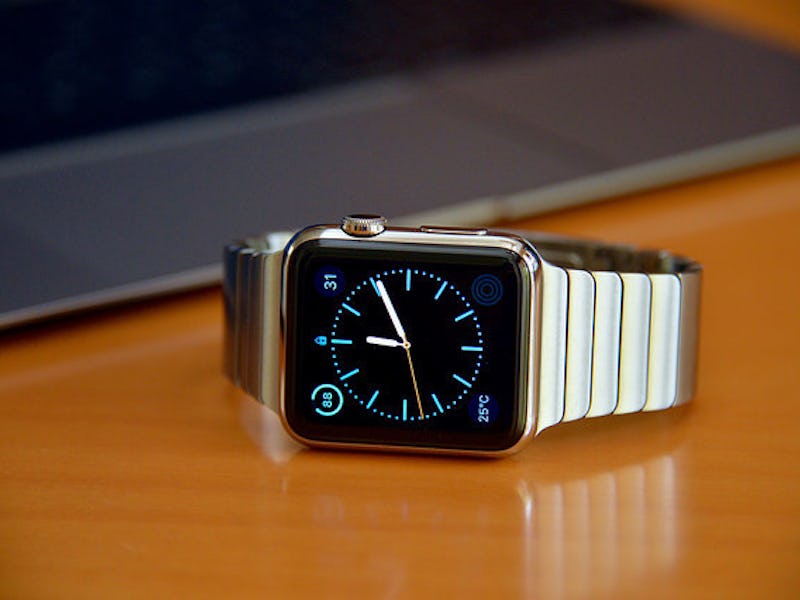What the Apple Watch Means a Year After Its Debut
This is not the dawn of wearable smart devices. That doesn't mean it will never be.

A year ago today, the world held its breath as Apple CEO Tim Cook unveiled the “next chapter of Apple’s story,” the uberhyped Apple Watch. The internet exploded. But the coverage wasn’t uniformly complimentary or indeed uniform at all. Different people made different things of the Apple Watch (hat, brooch, pterodactyl), and that didn’t change over the ensuing weeks and months as the roll out failed to inspire a frenzy.
There was a good amount of snark, a healthy interrogation of whether this would be Apple’s first stumble, and then a debate on whether the new device, which boasted an entry-level price of $359 (36 Timexes), would only serve to further divide the world’s haves from the have-nots. Thus is tech coverage. But people did buy and wear the watch. Just not as many as Apple hoped.
Apple downplayed expectations publicly, privately, the story went that Apple was leaning on the Watch to do to that market what the smartphone had done to smartphones and the iPad to tablet technology. Apple predicted that no less than 36 million of the watches were expected to sell in the first 12 months. Though there remains no clear sense of how many watches have sold, it seems safe to assume the number isn’t the number, a figure wished for and no-doubt debated in Bay Area boardrooms. Apple’s first quarterly earnings report after the Watch’s debut didn’t even split Watch sales from the “Other” category, as though deliberately trying to hide disappointing numbers. Analysts were forced to do the math themselves, most of whom concluding that the debut had been a disappointment.
The annoying fact is that it’s very difficult to judge whether the Watch was a success or failure. It was, to the everlasting frustration of the commentariat, probably neither. In the wild, reviews were divided and borderline incoherent. Some users immediately loved the watch, including those who’d intentionally set out to hate it. But a large contingent of haters complained that the Watch moved too slowly, many blaming the fact that the Watch had to connect to an iPhone for most of its usable features. (Against this criticism, fans will be pleased to note that native apps are coming down the pike.
Apple Watches are seen in the wild, but they aren’t common in the manner of iPhones or even iPads. But even that could change. The effort to “move technology closer to the body” is a work in progress, but it is a work that has a near-certain conclusion. Eventually, Apple’s basic premise will likely be borne out. We will strap hardware to our body. And we will want that hardware to look good.
A year in, the Apple Watch is more notable for what it wasn’t — a sea change — than what it was (or is). The product is well conceived but fundamentally basic. It didn’t stir people, but it did illustrate that Apple intends to attack the “Other” category with the singular ferocity of wealth. Can Cupertino make a great watch? If we’ve learned anything, it’s that that is the wrong question. Cupertino makes digital devices. And they will get you to strap one to your body. It’s only a matter of time.